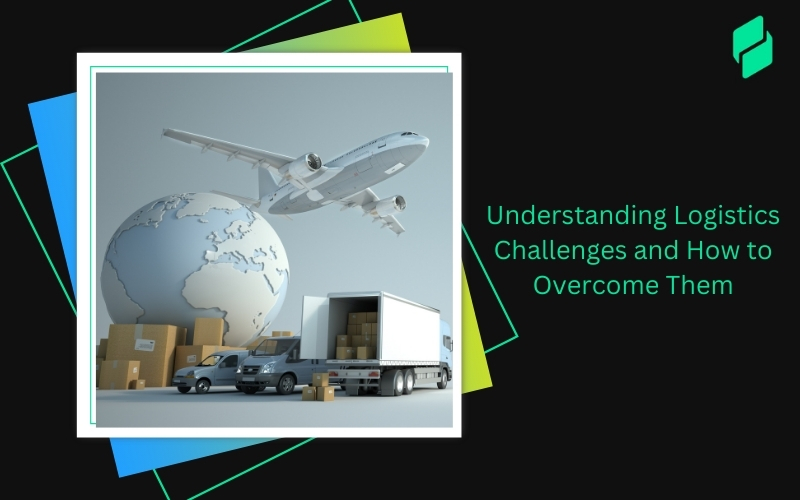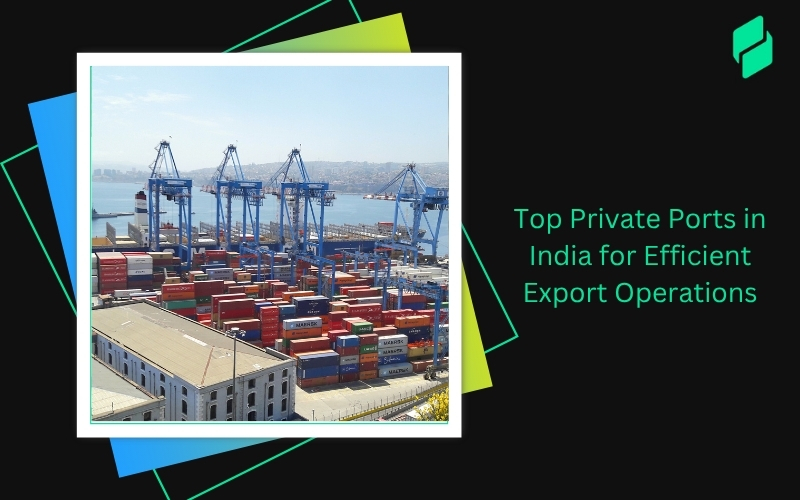Optimize your business: use unlimited savings with Pazago fulfilled now!
Get Started ->Did you know that the Indian textile industry is the second-highest employer in the country? It employs 45 million people directly and 60 million more in supporting sectors. This makes it an integral part of India’s social and economic life.
The segment has seen a good bounce lately, and the textile industry exports are growing really nicely. Therefore, it is mandatory for those engaged in imports or exports to stay up to date with trends impacting this positive growth. In this blog, we will also discuss the facilitators and trends driving the growth of the textile industry exports.
Indian Textile Market Size and Growth

Exports in the Indian textile sector recently rose sharply to USD 21 billion. This growth was not limited to a single segment but spanned all categories, showcasing impressive accomplishments across the industry.
- Readymade garments led the charge, soaring 12%, as strong demand for Indian-made clothing emerged.
- Silk products have also surged by 40%.
India has firmly established its presence in the global textile industry. Currently, it ranks as the fourth-largest textile exporter worldwide. Looking ahead, the outlook for FY26 is even more promising. Experts expect textile exports to climb to a staggering USD 65 billion.
To understand this export boom, we need to identify the key factors that influence this growth.
Also Read: Exploring Top 10 Export Companies In India
Factors Influencing Export Growth

India's rise in the textile market isn't random; many connected reasons have pushed this growth. Explore these main causes and see how they affect textile export expansion.
- Technological Advancements
Technology has changed the way we make, design, and sell textiles. Here's the impact:
- Automated Looms: These machines boost output and cut down manual work, meeting global needs fast.
- Digital Printing: It offers complex designs and personalization for buyers seeking unique fabrics.
- Smart Textiles: Mixing electronics with fabrics creates new chances in sports, healthcare, fashion, etc.
- Market Diversification
Relying on traditional markets can be risky, and India's exporters wisely widen their scope.
- New Destinations: India stretches its export network to places like Africa and Southeast Asia.
- New Segments: Special markets for technical textiles (i.e., fire-resistant or medical) give extra growth paths.
- Sustainable Textiles
Sustainability isn't a choice anymore ‒ it’s needed. Global buyers want green products; India's textile scene adapts to meet these desires.
- Eco-Friendly Materials: Organic cotton plus recycled fibers lead the way; cotton yarn exports hit $11.7 billion in 2023-24.
- Sustainable Practices: Green methods like eco-friendly dyes or water-saving tech are growing popular ‒ especially across Europe.
- Global Demand: Rising love for sustainable goods helps exporters secure deals with eco-aware buyers.
- Product-Specific Growth
Some product types still rule India's exports due to top-notch quality plus skillful work.
- Cotton Yarn and Fabrics: India is known for its fine cotton items, which drive large exports.
- Handloom Products: Traditional skills mixed with modern styles are very popular among high-end markets.
- Fashion-Forward Apparel
Indian fabrics aren't only useful ‒ they're stylish, too.
- Design Innovation: Indian creators make trendy clothes, making Indian wear known worldwide.
- Global Runways: Indian textiles are shining at big fashion shows, increasing their charm among luxury buyers.
Recognizing these factors allows us to better understand India's key markets and global standing.
Key Markets and Global Standing
India's textile trades are directed towards several key markets, with the following countries being the most significant partners:
How India’s Textile Industry Stacks Up Against Global Competitors
India is one of the top players in the global textile industry, but it faces tough competition. China leads the market with its massive production capabilities and efficient supply chains, making it the largest exporter of textiles. Germany, on the other hand, excels in technical textiles, which are used in industries like construction and healthcare.
India, however, brings something unique to the table. It combines affordable production with unmatched craftsmanship. Indian manufacturers cater to both ends of the market—offering large-scale, cost-effective production for mass buyers while also producing intricate, handwoven fabrics and embroidery that attract luxury brands.
How Does This Impact Your Strategy?
These dynamics are crucial for importers and exporters like you. Understanding which countries have high demand for specific products can help you target your efforts more accurately. Whether supplying fiber yarns for industrial use or high-fashion garments, tailoring your strategy to meet specific market preferences can make all the difference.
Turn India’s Strengths into Your Advantage
India's strong global standing isn't just a statistic—it's an opportunity. By aligning with trusted manufacturers and distributors, you can tap into the strengths of a market that continues to evolve and expand.
Having identified key markets, we can now turn the attention to current trends impacting these exports.
Also Read: India's Top Export Destinations and Trading Partners
Trends in India’s Textile Exports

You have probably noticed some big changes shaking up the textile industry exports. Let’s look at these trends and how they guide businesses like yours.
- Tech-Driven Growth
Technology is changing India's textile industry ‒ making production faster, more efficient, and easier to customize. New dyeing and printing methods reduce waste ‒ a big plus for eco-friendly buyers. Digital chain systems like Pazago simplify work by providing comprehensive tracking tools like centralized communication, easy documentation, tracking shipments, etc.
- The Rise of Sustainable Textiles
Sustainability is becoming very important ‒ global buyers want eco-friendly products more often. Materials such as recycled polyester and organic cotton have grown in popularity ‒ along with certifications like GOTS and OEKO-TEX. Manufacturers use energy-efficient machines and recycle wastewater to meet environmental rules ‒ especially in the EU. Following sustainable practices gives exporters a competitive edge.
- Market Diversification
India's textile industry exports are growing beyond the usual places like the U.S. and Europe. New opportunities are emerging in Africa, South America, and Southeast Asia, where people want cheap textiles more now. India's wide variety of products, including special use technical textiles, matches these markets' needs well.
- Growth in Handloom and Craft-Based Exports
Handmade items and crafts are becoming popular again globally. Handwoven sarees, embroidered clothes, and block-printed fabrics are appreciated for their eco-friendly nature and skilled creation. Working with global fashion events has raised Indian crafts' profile, giving exporters a chance to show off culturally rich products that appeal worldwide.
- Increasing Export Volumes in Key Segments
The Indian textile industry is experiencing a significant increase in export volumes, especially in segments like cotton yarn, fabrics, made-ups, and handloom products. This growth is driven by rising global demand, competitive manufacturing costs, and supportive government policies. For you, the expanding market offers increased revenue opportunities globally.
- E-Commerce and Direct-to-Consumer Sales
The rise in online shopping has opened up new opportunities for textile exporters. Global online platforms allow easier access to overseas consumers and boutique retailers. Exploring new markets through e-commerce provides an affordable way for exporters to expand without high upfront costs.
As we analyze these trends, we must also confront the challenges threatening their sustainability.
Also Read: List Of Profitable & Best Products To Export From India
Challenges Faced by the Textile Industry

The Indian textile sector is under constraint by a few challenges that determine its competitiveness in the international market. Here are a few of those challenges:
- Pressure from Multinational Suppliers: Bangladesh, Vietnam, and China are able to grab a significant share of the international market due to a low cost of production. This means the Indian exporters have to keep their prices low while maintaining the standards.
- Quality Management and Supply Chain Division: The quality of the finished products in India tends to be inconsistent, along with the timely delivery due to the segmented supply chain.
- Environmental Sustainability Issues: The Indian textile sector is a major consumer of water, energy, and chemicals, which could damage the environment, which is, in turn, a hurdle given the increased global pressure to go green.
- Infrastructural issues: Other than using cost-cutting measures, problems like transportation and port inefficiencies have made it hard to facilitate easy exports.
- Skilled Labor Shortage: While the industry faces a shortage of skilled workers, efforts are being made to modernize operations and adopt automation. This shift is creating opportunities to build a workforce capable of sustainable growth. Despite current recruitment challenges, the industry has the potential to attract and train the right talent to meet its needs.
- Exchange Volatility: Exchange rate fluctuations can significantly impact textile export revenues, especially in major markets like the US and Europe. For example, weaker domestic currency enhances competitiveness by lowering prices in foreign markets, potentially increasing export volumes. These changes also affect the cost of imported raw materials, influencing profit margins.
Overcoming these challenges, the Government of India introduced a number of schemes for the textile industry.
Also Read: Key Challenges and Solutions in Supply Chain Management
Government Policies Driving the Textile Industry

Textile production in India owes a large part of its achievement to targeted workfare industrial policies, which help it to scale up, gain a competitive advantage, and remain sustainable. Next, let's talk about the most useful programs and their use for exporters.
- Export Promotion Schemes
Indian government rolled out several schemes to support exports and ease the logistic and operational burden of textile companies:
- Remission of Duties and Taxes on Exported Products (RoDTEP): Helps lower the cost of Indian textiles for international buyers by refunding taxes and duties already included in the product's price.
- Production Linked Incentive (PLI) Scheme: This scheme boosts high-value textiles, such as man-made and technical fabrics. By targeting these premium segments, it aims to help India expand its exports.
- Interest Equalization Scheme (IES): The scheme targets high-value segment textiles, such as man-made and technical textiles, to diversify exports.
- Infrastructure Development
Modern infrastructure is critical for efficient production and export. The government has put a lot of resources into building top-tier facilities:
- Mega Textile Parks (PM MITRA): These are seven big textile parks with up-to-date facilities. They help make production more efficient, reduce transportation costs, and support bigger exports.
- Integrated Processing Development Scheme (IPDS): This scheme promotes eco-friendly processing units that prioritize sustainability through measures like water and energy conservation.
- Support for Small and Medium Enterprises (SMEs)
Since SMEs constitute a significant portion of the textile sector, targeted programs ensure their growth and competitiveness:
- Technology Upgradation Fund Scheme (TUFS): This program gives these businesses low-cost loans so they can buy better machines and new technology. With these upgrades, they can make higher-quality products that meet international standards.
- Samarth (Scheme For Capacity Building In Textile Sector): It is a training program that teaches people the skills needed to work in the textile industry. This ensures that textile companies always have skilled workers available.
- Focus on Sustainability
The government is also steering the textile industry toward sustainable practices, which align with global buyer expectations:
- Green Technology Initiatives: Financial support for adopting energy-efficient machinery, water recycling, and non-toxic dyes, appealing to eco-conscious buyers.
- Export Certifications: Assistance with obtaining global eco-certifications like Global Organic Textile Standard (GOTS) to meet sustainability standards.
- Market Diversification Incentives
To reduce dependency on a few traditional markets, the government encourages exporters to explore new geographies and product segments:
- Market Access Initiative (MAI): This program offers financial assistance to help with participation in international trade fairs and marketing efforts in new markets.
- India-Australia Economic Cooperation and Trade Agreement (ECTA): Reduces tariffs and opens access to markets like Australia, enhancing competitiveness.
- Encouraging Innovation
Innovation serves as the foundation for a competitive industry, and the government supports this through:
- National Technical Textiles Mission (NTTM): Promotes the production of technical textiles used in industries like healthcare and defense.
- Grant for Research & Entrepreneurship across Aspiring Innovators in Technical Textiles (GREAT): Supports research into advanced products like smart textiles and innovative fibers to meet specialized global demands.
While the government's role is pivotal, individual strategies will ultimately help businesses optimize their exports.
Also Read: Meaning and Objectives of EXIM Policy in Export Trade
Easy Strategies to Boost Your Exports

Exporters need to take early steps to align with international markets, strengthen innovation, and provide solutions for sustainability to extend their market reach. The following are essential strategies that can boost export performance:
- Invest in Technology: Think about upgrading your tools. Using innovations like automated machines, digital printing, or smart fabrics can help you work faster and more efficiently.
- Focus on Sustainability: Customers are looking for eco-friendly products. Using materials like organic cotton or recycled fibers can help the planet and attract more buyers.
- Offer More Choices (Product Diversification): Expanding your product line can help you reach new customers. Niche markets, in particular, may be interested in unique, specialized items.
- Explore New Markets: Market research can help you find new places to sell your goods. Teaming up with other companies can also make it easier to enter new markets.
- Simplify Your Supply Chain: Simplifying how you get materials and deliver products can cut costs, improve quality, and keep your customers happy. Using technology and building strong partnerships can help achieve this.
- Focus on Quality: High-quality products always win. Set up solid quality checks and go for global certifications to earn trust and keep customers coming back.
Lastly, tools like Pazago can simplify your approach to global trade, helping you find growth opportunities faster and smarter.
Also Read: 10 Expert Tips on Logistics Planning and Strategy
Boost Textile Exports with Pazago

Pazago offers smart, innovative solutions designed to simplify every step of the process, making it easier for businesses to operate smoothly in global markets.
- Cost-Effective Logistics: Access trusted and affordable carriers offering competitive rates for ocean shipping and inland transportation.
- Flexible Credit Solutions: Collateral-free credit with low interest rates for tailored financial support.
- Unified Communication: Centralized hub for seamless communication between trade partners.
- Effortless Document Handling: Secure, quick access to all trade documents in one place.
- Real-Time Cargo Tracking: Track shipments from 180+ carriers for timely deliveries.
- Smooth International Payments: Manage Forex rates for secure, cost-effective cross-border transactions.
- Quality Control Tools: Choose trusted providers and receive inspection reports for quality assurance.
Pazago simplifies the export process, helping businesses grow while ensuring efficiency, cost-effectiveness, and transparency.
Conclusion
India's textile industry is at an exciting turning point. Textile industry exports are on the rise, and fresh opportunities are opening up worldwide. However, to keep growing in the long run, the industry has a few hurdles to tackle. There’s tough competition out there, maintaining consistent quality is a big task, and managing complex supply chains can be tricky.
Overcoming these challenges is crucial for lasting success in the global market. Pazago's advanced solutions for communication, logistics, payments, and quality control simplify the journey to international success. By optimizing processes, reducing costs, and simplifying operations, Pazago helps businesses to confidently expand their global footprint.
Expand your textile export potential by partnering with Pazago today.


.png)








